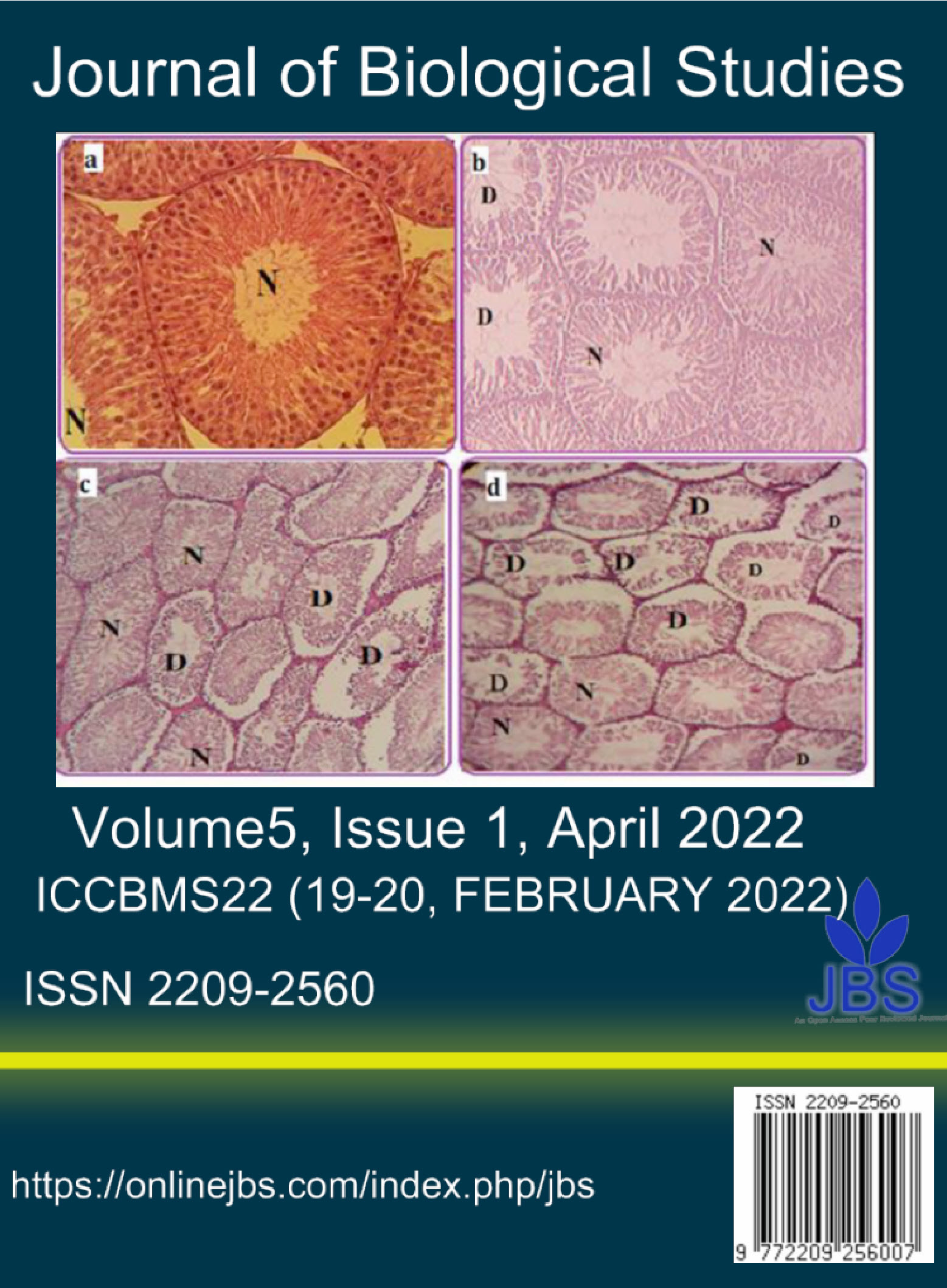Characterizarion of graphene oxide obtained by modified Hummer method
Main Article Content
Abstract
One of the materials that has attracted the attention of nanotechnology researchers today is graphene oxide (GO). GO was first developed by Oxford chemist Benjamin C. Brody in 1859 by processing graphite with a mixture of potassium chlorate and smoky nitric acid. GO, formerly known as graphite acid, is a combination of carbon, oxygen, and hydrogen in variable ratios obtained by refining graphite with strong oxidants and acids to decompose excess metals. The oxidized product is a yellow solid with a C: O ratio between 2.1 and 2.9 that maintains the structure of the graphite layer but at a much larger and irregular distance (Januário et al., 2021). GO is a two-dimensional, monolayer material with a hexagonal and crystalline structure that has oxygen groups on its plates and its high biocompatibility and biodegradability has made it one of the nanomaterial substrates for stabilizing and transporting enzymes. In recent years, researchers have used the substance in both medical and pharmaceutical technologies and industrial applications (Abdelhamid & Hussein, 2021). The use of GO for a glucose sensor was first reported in 2009 (Karki et al., 2020). GO has been used in various fields, including in the manufacture of sensors, due to its outstanding chemical, electrical and optical properties, as well as its high oxygen content. Also as an antimicrobial agent for biomedical applications, as well as nanofillers for membranes was used in wastewater treatment. The future of GO-based membranes for the treatment of water-contaminated water is also presented. GO sheets are used to make materials such as paper, membranes, thin films, and composites. Initially, graphene oxide was considered as a possible intermediate for the production of graphene (Januário et al., 2021). Biochemical and biomedical applications of GO rely heavily on the interactions of biomolecules with it (Zhang et al., 2012). This carbon-based nanoparticle is also used as a drug carrier (Abdelhamid & Hussein, 2021). Chemical vapor deposition and thermal peeling, microchannel peeling of graphite, and direct synthesis and chemical peeling of graphite, are common methods for GO synthesis developed by Brody Stedemiz and Hummer (Ciszewski & Mianowski, 2013). The method chosen in present study for GO synthesis is the modified Hammers method, in which the synthesis duration was shorter and the process was easier. And 0.5 g sodium nitrate were mixed with 23 mL sulfuric acid in a 500 mL flask place in. To synthesize GO, 0.5 g of natural graphite powder and 0.5 g of NaNo3 mixed with 23 ml of sulfuric acid in a 500 mL flask placed in an ice bath (below 20 °C) for 4 hours with stirring. 3 grams of potassium permanganate was added to the flask and the solution was stirred for one hour. The temperature was increased to 35 °C and the solution was stirred for another one hour. 46 mL of distilled water was added slowly and the temperature was increased to 95 °C without boiling for 2 hours. The solution was left to reach the same room temperature. 100 mL distilled water was added and stirred for an hour. 10 mL hydrogen peroxide (0.30%) was added to the solution and stirred for an hour. The solution was centrifuged at 5000 rpm for 7 minutes and the supernatant was removed. 30 mL distilled water and 10 mL HCl (0.37%) was added to the precipitate and the solution was centrifuged. This procedure was carried out for 3 times. The obtained precipitate was evaluated using x-ray diffraction pattern (XRD), scanning electron microscope (SEM) and fourier transform infrared spectroscopy (FTIR) to demonstrate whether the precipitated material was GO nanoparticles. The XRD pattern for GO (Figure 1), SEM image (Figure 2) and The FTIR spectra confirmed the fabrication of GO (Figure 3). We have shown that our modified Hummer method for GO synthesis, is a convenient and cost-effective synthesis of GO nanoparticle.
Article Details

This work is licensed under a Creative Commons Attribution 4.0 International License.
